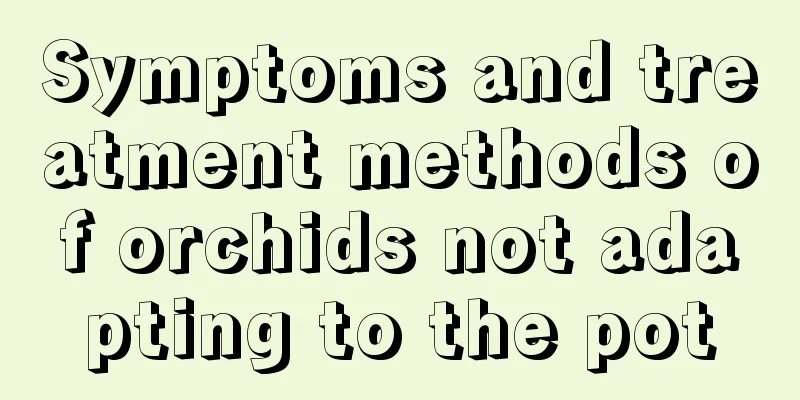Symptoms and treatment methods of orchids not adapting to the pot

1. Performance1. Leaves: The leaves are wilted and dull, with bent and dry edges, and even dehydrated. In severe cases, black spots and burnt ends may appear on the leaves. This means that the plant has not acclimatized. 2. Leaf buds: No new buds emerge for a long time. Or the plant has new shoots, but the growth rate is slow and it is difficult to grow into seedlings. Even if the leaf buds have emerged from the soil, if there are signs of dead buds, it means that the orchid has not adapted to the pot. 3. Roots: If the orchid has not acclimatized to the pot, the roots will not grow well. Although it will grow roots or new roots, they are not normal. Or the orchid roots do not grow, and the new seedlings that should take root do not take root either. Additionally, the roots will become hard and inflexible. II. Solutions1. The most critical way to deal with orchids that refuse to adapt to the pot is to allow the orchid to revive from dormancy and resume normal growth. The plant can be fully nourished to force it to recover. 2. To grow orchids, you must first take good care of the roots, and the key to growing good orchid roots lies in the planting material. If the planting material is not suitable, the orchid will not adapt to the pot. So you may need to replace the potting soil. You should choose granular orchid planting materials, because granular planting materials have good air permeability, drain water and retain moisture, which is beneficial to the growth and breathing of orchid roots. The particle size should be around 0.5-2cm. 3. An inappropriate maintenance environment will also make it difficult for orchids to adapt to the pot. During the acclimatization period, it is best to place the plant in a well-ventilated, cool place without direct sunlight. This will greatly reduce the yellowing of orchid leaves. 4. Excessive watering after potting will make the orchid roots unable to breathe properly, affecting their normal rooting. Moreover, if the soil in the pot is too wet, it is easy for bacteria to grow. When the orchid is first planted in a pot, the soil should be a little drier, which is more conducive to the plant adapting to the pot and the growth of new roots. |
<<: The cultivation prospects and key points of cultivation technology of straw mushroom
>>: Cultivation technology and processing of Pinellia ternata
Recommend
Is the bougainvillea chameleon a frequent bloomer?
Chameleon is a relatively common variety of bouga...
How to grow succulent Huangli in winter
Plant preferences This plant prefers an environme...
Weeping Jasmine cultivation methods and precautions
Weeping Jasmine, the "white butterfly" ...
How to hydroponically cultivate hyacinth and how many times can it bloom
1. Hydroponic method 1. Prepare the container: Wh...
The Flower Language and Legend of Colchicum
Flower language of Colchicum The flower language ...
Hyacinth flowering period, hyacinth flower language
1. Flowering period Its flowering period is affec...
Cyclamen cultivation methods and precautions
1. Soil The first requirement is that it is nutri...
Peppermint Benefits and Uses
Edible effects of peppermint Peppermint is lightl...
How to grow Schefflera on the balcony, what should be paid attention to
1. Can it be grown on the balcony? Schefflera is ...
How to repot the goldfish plant
1. Time to change pots It is best to repot the go...
How to prune Phalaenopsis in summer
1. Two cutting methods The flowering period of Ph...
Can creeper be potted?
Can creeper be potted? Ivy can be planted in pots...
Okra growth environment conditions and characteristics
Okra growth environment conditions and requiremen...
How often should I water the osmanthus?
How often should I water the osmanthus? There is ...
How to artificially pollinate the Woniu succulent plant (a tutorial on how to successfully pollinate and seed succulent plants)
The succulent plant Woniu is a relatively unpopul...









